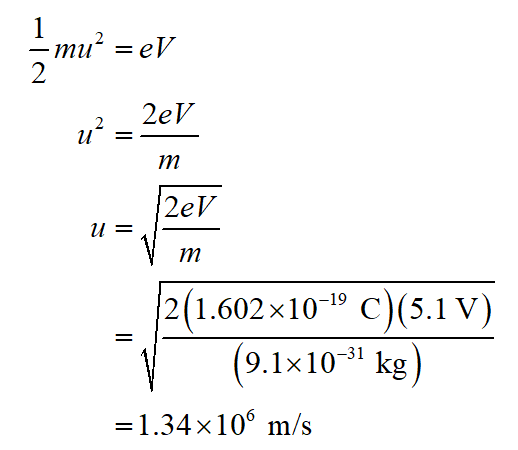NOTE: This is not Compton scattering! An electron is accelerated from rest through a 5.1 V difference in potential, and then shot outward in the positive x-direction. It then collides head-on with a photon of frequency 171x1015 Hz moving in the negative x-direction. After the collision, the photon bounces backward (in the positive x-direction) with frequency 27.7x1015 Hz. Find the velocity of the electron, in m/s, after the collision. The sign of your answer will give the direction.
NOTE: This is not Compton scattering! An electron is accelerated from rest through a 5.1 V difference in potential, and then shot outward in the positive x-direction. It then collides head-on with a photon of frequency 171x1015 Hz moving in the negative x-direction. After the collision, the photon bounces backward (in the positive x-direction) with frequency 27.7x1015 Hz. Find the velocity of the electron, in m/s, after the collision. The sign of your answer will give the direction.
Related questions
Question
Question in attachments

Transcribed Image Text:NOTE: This is not Compton scattering!
An electron is accelerated from rest through a 5.1 V difference in potential, and then shot outward in the positive x-direction. It then collides head-on with a
photon of frequency 171x1015 Hz moving in the negative x-direction. After the collision, the photon bounces backward (in the positive x-direction) with frequency
27.7x1015 Hz. Find the velocity of the electron, in m/s, after the collision. The sign of your answer will give the direction.
Expert Solution
Step 1
Let e denotes the electron’s charge, V denotes the acceleration potential, m denotes the electron mass, u denotes the speed of the electron after acceleration. Therefore,

Step by step
Solved in 2 steps with 2 images
